COMMENT OF THE DAY: UNINCORPORATED HARRIS COUNTY OUGHT TO START INCORPORATING 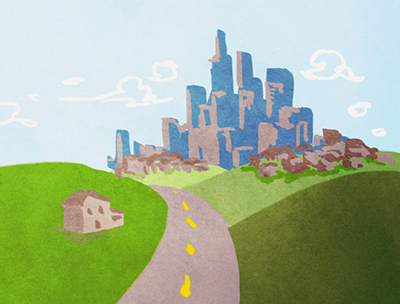 “Since the population is booming in unincorporated Harris County, it may approach a tipping point where the representation may need to be increased on the Commissioners Court. As it stands now, there are 4 Commissioners plus the County Judge, a total of 5 elected officials for this burgeoning population. Conceivably, we could have 8 Commissioners plus the judge so that each ‘slice’ of the county could be fewer people and theoretically, there would be more responsiveness from the county office to a given resident. That being said, I don’t mind more townships or small cities being created to mop up the unincorporated areas so that each burg could work to benefit its taxpayers. Basically, a divide and conquer approach (or ‘zone defense’ if you want another metaphor), but to provide responsive, efficient service to its own residents. There is only so much that the county can do when it has to cover the whole of Harris County.” [Wolf Brand Chili, commenting on The Astonishing Rise of Unincorporated Harris County] Illustration: Lulu
“Since the population is booming in unincorporated Harris County, it may approach a tipping point where the representation may need to be increased on the Commissioners Court. As it stands now, there are 4 Commissioners plus the County Judge, a total of 5 elected officials for this burgeoning population. Conceivably, we could have 8 Commissioners plus the judge so that each ‘slice’ of the county could be fewer people and theoretically, there would be more responsiveness from the county office to a given resident. That being said, I don’t mind more townships or small cities being created to mop up the unincorporated areas so that each burg could work to benefit its taxpayers. Basically, a divide and conquer approach (or ‘zone defense’ if you want another metaphor), but to provide responsive, efficient service to its own residents. There is only so much that the county can do when it has to cover the whole of Harris County.” [Wolf Brand Chili, commenting on The Astonishing Rise of Unincorporated Harris County] Illustration: Lulu
Sprawl
THE ASTONISHING RISE OF UNINCORPORATED HARRIS COUNTY 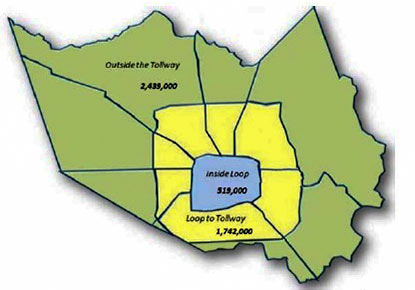 You already knew that more people in Harris County live outside Beltway 8 than inside it, right? And that of the people residing inside the Beltway, fewer than a quarter live inside the Loop? Here’s another nugget contained in the latest Harris County population report: the population of Harris County’s unincorporated areas will likely surpass that of Houston in 2020. That’s right: for 16 years, more than 80 percent of the growth in Harris County has taken place outside of the city limits of Houston and the 34 other cities that make up the county. Already, says the report, “‘Harris County Unincorporated’ would be the second largest city in Texas, the fifth largest in the U.S. and has a larger population than 14 U.S. states.” [Harris County Budget Management Department via Houston Chronicle] Map of populations inside and outside of ring roads: Harris County Population Report – January 2017
You already knew that more people in Harris County live outside Beltway 8 than inside it, right? And that of the people residing inside the Beltway, fewer than a quarter live inside the Loop? Here’s another nugget contained in the latest Harris County population report: the population of Harris County’s unincorporated areas will likely surpass that of Houston in 2020. That’s right: for 16 years, more than 80 percent of the growth in Harris County has taken place outside of the city limits of Houston and the 34 other cities that make up the county. Already, says the report, “‘Harris County Unincorporated’ would be the second largest city in Texas, the fifth largest in the U.S. and has a larger population than 14 U.S. states.” [Harris County Budget Management Department via Houston Chronicle] Map of populations inside and outside of ring roads: Harris County Population Report – January 2017
PEARLAND, CITY OF 3 WALMARTS 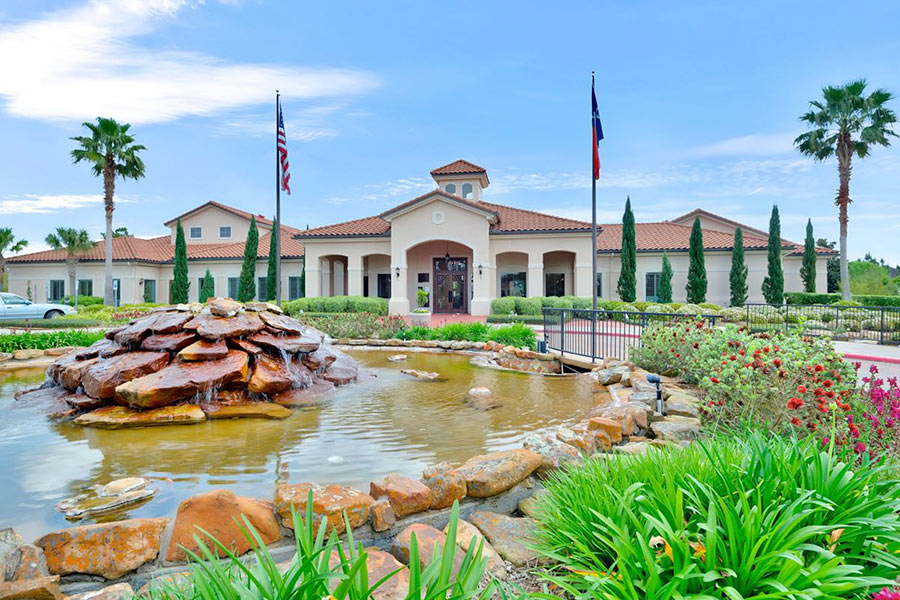 Ahead of this weekend’s local runoff election, the Christian Science Monitor delves into the rapid growth and demographic shifts in the “dumbbell-shaped suburb” of Pearland — and how a few candidates for municipal office are approaching it: “Its diversification is largely a result of [Houston’s] inexorable sprawl . . . where residents keep moving farther out in search of lower-density living.” Pearland now ranks as the nation’s eighth-fastest-growing city, but Houston’s only second-most-diverse suburb, where, writes Simon Montlake, as many as 75 languages are spoken in local schools, but residents refer to the eastern-most Walmart in town as the “white Wal-mart†— “because of who shops there – and who doesn’t.” At a forum held in the Bella Vita Club at the center of the age-restricted Bellavita at Green Tee community off Scarsdale Blvd. just east of the Golfcrest Country Club, a middle-aged woman wants to know how candidates plan to draw together what she sees as the “two cities” of Pearland. “Pearland is solidly middle-class,” Montlake notes. “A starter house costs $140,000, and median household income is $97,000, much higher than in Houston. But newcomers rushing to downtown jobs barely brush shoulders with the mostly white retirees who tee off on the golf course weekday mornings or the older families that work and play near home.” [Christian Science Monitor] Photo of Bella Vita Club: 55places.com
Ahead of this weekend’s local runoff election, the Christian Science Monitor delves into the rapid growth and demographic shifts in the “dumbbell-shaped suburb” of Pearland — and how a few candidates for municipal office are approaching it: “Its diversification is largely a result of [Houston’s] inexorable sprawl . . . where residents keep moving farther out in search of lower-density living.” Pearland now ranks as the nation’s eighth-fastest-growing city, but Houston’s only second-most-diverse suburb, where, writes Simon Montlake, as many as 75 languages are spoken in local schools, but residents refer to the eastern-most Walmart in town as the “white Wal-mart†— “because of who shops there – and who doesn’t.” At a forum held in the Bella Vita Club at the center of the age-restricted Bellavita at Green Tee community off Scarsdale Blvd. just east of the Golfcrest Country Club, a middle-aged woman wants to know how candidates plan to draw together what she sees as the “two cities” of Pearland. “Pearland is solidly middle-class,” Montlake notes. “A starter house costs $140,000, and median household income is $97,000, much higher than in Houston. But newcomers rushing to downtown jobs barely brush shoulders with the mostly white retirees who tee off on the golf course weekday mornings or the older families that work and play near home.” [Christian Science Monitor] Photo of Bella Vita Club: 55places.com

Have you seen this video (at top) from the city’s planning and development department? It’s silent, several years old, and not the flashiest portrait of Houston available on YouTube. But in a compelling series of images, it shows how mightily the city’s official boundaries have grown — simply by tracking Houston’s annexation history, decade by decade.
But now there’s a more active way to appreciate Houston’s historically bulging waistline — one that could even help increase your own in the process (depending on your choice of beverages). Each of the 5 laser-cut acrylic coasters in Data Design Co.‘s limited-edition set (shown in the photo above) is etched with an outline of this ever-expanding city at some point in its history. Designers Brian Barr and Matthew Wettergreen had the sets manufactured in Houston by Post-Studio, and are now offering them for sale for $60. Buy a set, and try one beverage on each over the course of an evening of thirst-quenching, and you’ll allow yourself to drink in a progressive view of this city’s expansive growth.
Sure, drone footage is great. But how often do you get to see 3 flying laboratories survey the breadth of Houston’s sprawl from this high up?
The trio of WB-57s shown surveying a hazy Houston in the video above are based at Ellington Field. The fleet is part of NASA’s WB-57 High Altitude Research Program, which regularly conducts scientific research and testing. Among its missions: mapping, collection of cosmic dust, support of rocket launches, and flights over hurricanes, including recent storms Joaquin and Patricia. Eerie faded-Emerald-City scenes of Downtown, the Galleria, the Med Center, and other vertical standouts unfold beneath the wingtips. The flight, which took place before Thanksgiving (but for which footage was only posted to YouTube this week) marks the first time since the early 1970s that 3 WB-57s have flown together.
Video: Johnson Space Center via Eric Berger
COMMENT OF THE DAY RUNNER-UP: ZONING WOULDN’T HAVE KEPT THE SPRAWL AWAY 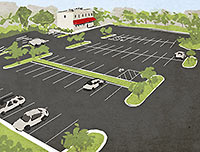 “It’s always frustrating when I hear Houston’s sprawl and prevalence of strip malls blamed on our lack of zoning. You can blame these on the setbacks and parking minimums that came along with Chapter 42, which made it illegal to build walkable neighborhoods.” [Angostura, commenting on Comment of the Day: The Kind of Zoning Houston Does Have] Illustration: Lulu
“It’s always frustrating when I hear Houston’s sprawl and prevalence of strip malls blamed on our lack of zoning. You can blame these on the setbacks and parking minimums that came along with Chapter 42, which made it illegal to build walkable neighborhoods.” [Angostura, commenting on Comment of the Day: The Kind of Zoning Houston Does Have] Illustration: Lulu
COMMENT OF THE DAY: HOW IT WORKS IN HOUSTON, THE FREE ENTERPRISE CITY  “. . . That is, and always has been, Houston. That unruly sprawl, those cookie-cutter suburbs, generic strip malls, traffic congestion, that all existed long before the Beltway was built. I grew up here, in a cookie-cutter suburb called ‘Sagemont’ located next to a 2 lane stretch of blacktop named ‘South Belt.’ My dad grew up in a cookie-cutter suburb 10 miles closer in, filled with generic strip malls, just outside what would become the 610 Loop. Today I live in another cookie-cutter suburb farther west, about half way between 610 and the Beltway. Still lots of congestion, sprawl, strip centers, etc. This is Houston, baby.
And just about everything in Houston exists because some powerful person (not necessarily a politician) owned tracts of land. All of those hip dense neighborhoods? They were empty fields that some speculator bought for next to nothing, then bribed . . . er, influenced someone in government to build something, often with tax dollars. That’s how things get done.” [Memebag, commenting on Driving Beltway 8, in Order To Read Houston in the Original] Illustration: Lulu
“. . . That is, and always has been, Houston. That unruly sprawl, those cookie-cutter suburbs, generic strip malls, traffic congestion, that all existed long before the Beltway was built. I grew up here, in a cookie-cutter suburb called ‘Sagemont’ located next to a 2 lane stretch of blacktop named ‘South Belt.’ My dad grew up in a cookie-cutter suburb 10 miles closer in, filled with generic strip malls, just outside what would become the 610 Loop. Today I live in another cookie-cutter suburb farther west, about half way between 610 and the Beltway. Still lots of congestion, sprawl, strip centers, etc. This is Houston, baby.
And just about everything in Houston exists because some powerful person (not necessarily a politician) owned tracts of land. All of those hip dense neighborhoods? They were empty fields that some speculator bought for next to nothing, then bribed . . . er, influenced someone in government to build something, often with tax dollars. That’s how things get done.” [Memebag, commenting on Driving Beltway 8, in Order To Read Houston in the Original] Illustration: Lulu
DRIVING BELTWAY 8, IN ORDER TO READ HOUSTON IN THE ORIGINAL  “To get a full sense of the place,” writes Cort McMurray, every Houstonian should travel Beltway 8’s full 83-mile circuit. Until you can find the time, though, his tour narrative may have to suffice: “Keep going. You’re not even halfway around. There are more factories, and more office buildings, more new construction, more traffic. There’s a steak house, built to look like Sam Houston’s Huntsville home, evidence that if you give a Houstonian a little time and a little encouragement and the right financing, a Houstonian will create something ridiculous, and the horse track, where nothing ever appears to be happening. Near Bush Intercontinental, you’ll endure Roadwork Purgatory: orange cones and narrowed lanes and blinking signs, and no evidence of any work being done. It’s been that way for 19 years.
East of the airport, the Beltway crosses vast swaths of tract homes and the strip centers and megachurches that inevitably follow them, funneling you toward the Jesse Jones Bridge, standing like the skeleton of some humongous sauropod, head forever bent to the Ship Channel, nosing about for some seaweed.” [OffCite] Photo of Steamboat House Steakhouse: Tomball Sesquicentennial Promenaders
“To get a full sense of the place,” writes Cort McMurray, every Houstonian should travel Beltway 8’s full 83-mile circuit. Until you can find the time, though, his tour narrative may have to suffice: “Keep going. You’re not even halfway around. There are more factories, and more office buildings, more new construction, more traffic. There’s a steak house, built to look like Sam Houston’s Huntsville home, evidence that if you give a Houstonian a little time and a little encouragement and the right financing, a Houstonian will create something ridiculous, and the horse track, where nothing ever appears to be happening. Near Bush Intercontinental, you’ll endure Roadwork Purgatory: orange cones and narrowed lanes and blinking signs, and no evidence of any work being done. It’s been that way for 19 years.
East of the airport, the Beltway crosses vast swaths of tract homes and the strip centers and megachurches that inevitably follow them, funneling you toward the Jesse Jones Bridge, standing like the skeleton of some humongous sauropod, head forever bent to the Ship Channel, nosing about for some seaweed.” [OffCite] Photo of Steamboat House Steakhouse: Tomball Sesquicentennial Promenaders
COMMENT OF THE DAY: THE SIGHTS ON AND OFF THE MEMORIAL DR. STRIP  “. . . The whole thing of having this parkside expressway that drops to 35 and morphs into a suburban strip for all of 1/4 mile before resuming high-aesthetics high-speed is wonderfully convenient. Your last chance gas, your breakfast tacos and kolaches, your late-night eats . . . it’s all right there, no mucking about with U-turns or feeder roads required.
And no, this stripmall won’t be a huge visual contribution . . . but who cares? The views just 100 yards to the south are about as aesthetically pleasing as one can find in our fair city, and after all, isn’t that what matters? So much discussion of the urban form boils down to complaining about what we see from our car windows. But if the view from home and office is nice, isn’t that really what matters?” [Purple City, commenting on How a Stretch of the Memorial Dr. Strip Earned Its Newest Strip Center] Illustration: Lulu
“. . . The whole thing of having this parkside expressway that drops to 35 and morphs into a suburban strip for all of 1/4 mile before resuming high-aesthetics high-speed is wonderfully convenient. Your last chance gas, your breakfast tacos and kolaches, your late-night eats . . . it’s all right there, no mucking about with U-turns or feeder roads required.
And no, this stripmall won’t be a huge visual contribution . . . but who cares? The views just 100 yards to the south are about as aesthetically pleasing as one can find in our fair city, and after all, isn’t that what matters? So much discussion of the urban form boils down to complaining about what we see from our car windows. But if the view from home and office is nice, isn’t that really what matters?” [Purple City, commenting on How a Stretch of the Memorial Dr. Strip Earned Its Newest Strip Center] Illustration: Lulu
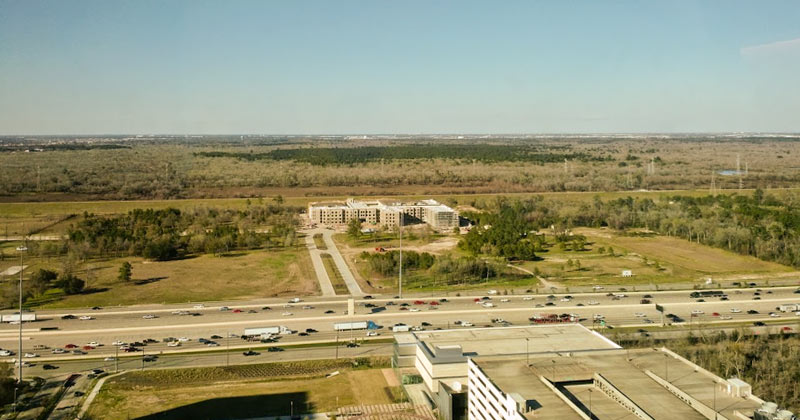
And now, a new 5-story apartment complex that’s outstanding in its field. Which is directly across I-10 from BP headquarters, and just south of the Addicks Reservoir. The reader who sent in this photo (showing the building at 13710 Park Row Dr. right in the center of the image) dubs it “Houston’s loneliest apartment complex.” But not for long — right?
WORLD’S LARGEST AIR CONDITIONING MANUFACTURER TO BUILD GIANT COMFORTPLEX AT NORTHERN REACHES OF KATY PRAIRIE 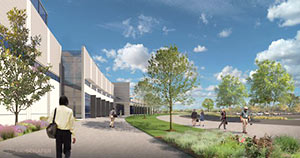 Ah, Houston industry! Oil may be down, but air conditioning is booming — and ready to do its part to further our fine city’s sprawl-ward spread. Ralph Bivins reports this morning that Japanese HVAC giant Daikin Industries, which paid $3.7 billion back in 2012 to buy Houston’s Goodman Global, will build a $417 million, 4,000,000-sq.-ft. manufacturing and logistics campus on virgin prairie southeast of Hockley, off U.S. 290 a good 3 miles west of the Grand Parkway. Dubbed the “Comfortplex,” the facility (portrayed in the rendering above) will consolidate current company operations in both Tennessee and Texas, and increase the company’s Houston-area workforce to approximately 4,000 employees. The Comfortplex will replace an existing 525,000-sq.-ft. Goodman air-conditioner factory near Loop 610 and 290 when it opens in 2016, Bivins notes. The company produces ducted and ductless AC systems under the Daikin, Goodman, and Amana brand names. [Realty News Report] Rendering: Daikin Industries
Ah, Houston industry! Oil may be down, but air conditioning is booming — and ready to do its part to further our fine city’s sprawl-ward spread. Ralph Bivins reports this morning that Japanese HVAC giant Daikin Industries, which paid $3.7 billion back in 2012 to buy Houston’s Goodman Global, will build a $417 million, 4,000,000-sq.-ft. manufacturing and logistics campus on virgin prairie southeast of Hockley, off U.S. 290 a good 3 miles west of the Grand Parkway. Dubbed the “Comfortplex,” the facility (portrayed in the rendering above) will consolidate current company operations in both Tennessee and Texas, and increase the company’s Houston-area workforce to approximately 4,000 employees. The Comfortplex will replace an existing 525,000-sq.-ft. Goodman air-conditioner factory near Loop 610 and 290 when it opens in 2016, Bivins notes. The company produces ducted and ductless AC systems under the Daikin, Goodman, and Amana brand names. [Realty News Report] Rendering: Daikin Industries
COMMENT OF THE DAY: BOSTON. IT’S WORTH IT TOO. 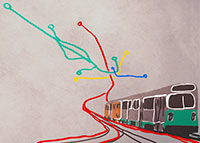 “I live in Boston which is pretty much the anti-Houston, moving there as an adult fleeing some of the things Blue Dog celebrates. Born and raised in sprawling Omaha, Nebraska, with its struggling downtown and leapfrogging subdivisions, I came east seeking the density, the option of subways and streetcars and walking because of the relative proximity of destinations, the historic architecture of row houses and institutions, the amenities of a major gateway city with an urban vibe. You’d hate Boston, the high cost of living, the terrible traffic on our chaotic layout of colliding streets, the lack of space, and the cold winters. I don’t like those things either, but I’ve decided to live with them because of the things I do like. You’ve made your choice too, and you intelligently don’t deny that you live in flat, sprawling, hot-humid, ten-lane-wide highway beribboned mass of strip mall scattered anonymity because you like it. And no snobby eastern elitist transplant so blinkered, he can’t appreciate the collective expression of American freedom that is Post Oak or The Woodlands or Sugarland or cul-de-sac-paradise-of-your-choice will . . . convince you otherwise. Midtown does seem to me kind of nice though :-)” [Robert H, commenting on Comment of the Day: The Real Houston Is Outside Those Tiny Urban Islands] Illustration: Lulu
“I live in Boston which is pretty much the anti-Houston, moving there as an adult fleeing some of the things Blue Dog celebrates. Born and raised in sprawling Omaha, Nebraska, with its struggling downtown and leapfrogging subdivisions, I came east seeking the density, the option of subways and streetcars and walking because of the relative proximity of destinations, the historic architecture of row houses and institutions, the amenities of a major gateway city with an urban vibe. You’d hate Boston, the high cost of living, the terrible traffic on our chaotic layout of colliding streets, the lack of space, and the cold winters. I don’t like those things either, but I’ve decided to live with them because of the things I do like. You’ve made your choice too, and you intelligently don’t deny that you live in flat, sprawling, hot-humid, ten-lane-wide highway beribboned mass of strip mall scattered anonymity because you like it. And no snobby eastern elitist transplant so blinkered, he can’t appreciate the collective expression of American freedom that is Post Oak or The Woodlands or Sugarland or cul-de-sac-paradise-of-your-choice will . . . convince you otherwise. Midtown does seem to me kind of nice though :-)” [Robert H, commenting on Comment of the Day: The Real Houston Is Outside Those Tiny Urban Islands] Illustration: Lulu
COMMENT OF THE DAY: TURNING HOUSTON INSIDE OUT 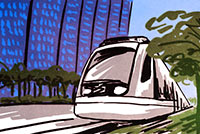 “It might be that the best outcome for Houston is for the Inner Loop to have an exurban quality of life. Send commuter rail out to the suburbs — not for the suburbanites to commute to downtown — but for the Inner Loopers to commute outbound in the mornings to densely clustered (out of necessity) suburban tall office towers surrounding the stations, and then back into town in the evenings.
This is more viable than the traditional idea of New Urbanist suburbs with transit connecting them to a downtown core since politically none of Houston’s suburbs are on board with cultivating a small town ambience, but are ok with letting office builders do their thing.
To be sure, suburbanites would still commute to downtown but it will be seen as an aberration. Downtown will still have things to do after dark, but other areas of the Inner Loop, connected by LRT/buses/cars/bikes/sidewalks, will do a much better job of providing the QOL aspiring exurbanites may crave.
Suburbanites will, of course, still commute to a large extent to the office towers in their suburb. But they will do so by car, and won’t care about the urbanist quality of life (in other words, nothing will change for them).” [anon22, commenting on Here’s the Freshest Satellite Photo of Downtown Houston You’ll See All Day] Illustration: Lulu
“It might be that the best outcome for Houston is for the Inner Loop to have an exurban quality of life. Send commuter rail out to the suburbs — not for the suburbanites to commute to downtown — but for the Inner Loopers to commute outbound in the mornings to densely clustered (out of necessity) suburban tall office towers surrounding the stations, and then back into town in the evenings.
This is more viable than the traditional idea of New Urbanist suburbs with transit connecting them to a downtown core since politically none of Houston’s suburbs are on board with cultivating a small town ambience, but are ok with letting office builders do their thing.
To be sure, suburbanites would still commute to downtown but it will be seen as an aberration. Downtown will still have things to do after dark, but other areas of the Inner Loop, connected by LRT/buses/cars/bikes/sidewalks, will do a much better job of providing the QOL aspiring exurbanites may crave.
Suburbanites will, of course, still commute to a large extent to the office towers in their suburb. But they will do so by car, and won’t care about the urbanist quality of life (in other words, nothing will change for them).” [anon22, commenting on Here’s the Freshest Satellite Photo of Downtown Houston You’ll See All Day] Illustration: Lulu
COMMENT OF THE DAY: THE REAL HOUSTON IS OUTSIDE THOSE TINY URBAN ISLANDS 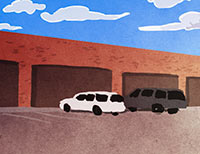 “Urban enthusiasts live in a bubble. I don’t care where they are. The reality is that the VAST majority of people like getting in a private air conditioned car, driving to an island of shopping or whatever and finding a parking space closest to where they are going without being bothered by street people. Urban enthusiasts are under the delusion that most people want to walk around in sticky moist air and sit at their desk stinking all day from sweat in order to pretend they live in a city that was built before cars were invented so they can live like the people they envy on t.v.
A dense urban environment in the inner city would be a novelty and I’m all for it. Choices are great. Downtown and Midtown are shaping up nicely. The center of Midtown is going to have a very cool buzz going on with all the new infill. The Match, Superblock, Mid-Main development, etc. East side Downtown is going to be a beast and so will Market Square.
But as cool as it may be to have a tiny, tiny, microscopic sliver of New York in the center of this city, it is totally unnecessary. Our booms have proven that. The VAST majority don’t have a problem with strip malls, blue glass or driving cars to get where they want to go. The VAST majority stay in Houston because they WANT to live in a suburban environment. Jobs? There are jobs in other cities. No one stays in Houston long if they really hate it. You can’t argue with success. Builders keep building things the way they do in Houston because it works.
‘Quality’ is subjective. Some people think Miley Cyrus is quality. But you can’t argue with ‘quantity.’ Houston is fascinating to people (even the haters) because whatever it is, unlike many of those true centers of urbanity on the east and west coast, Houston IS NOT stagnant. Even in slower economic times, things happen in Houston and it is fun watching it grow.” [Blue Dog, commenting on Comment of the Day: Still Waiting To See How Houston Is Going To Turn Out] Illustration: Lulu
“Urban enthusiasts live in a bubble. I don’t care where they are. The reality is that the VAST majority of people like getting in a private air conditioned car, driving to an island of shopping or whatever and finding a parking space closest to where they are going without being bothered by street people. Urban enthusiasts are under the delusion that most people want to walk around in sticky moist air and sit at their desk stinking all day from sweat in order to pretend they live in a city that was built before cars were invented so they can live like the people they envy on t.v.
A dense urban environment in the inner city would be a novelty and I’m all for it. Choices are great. Downtown and Midtown are shaping up nicely. The center of Midtown is going to have a very cool buzz going on with all the new infill. The Match, Superblock, Mid-Main development, etc. East side Downtown is going to be a beast and so will Market Square.
But as cool as it may be to have a tiny, tiny, microscopic sliver of New York in the center of this city, it is totally unnecessary. Our booms have proven that. The VAST majority don’t have a problem with strip malls, blue glass or driving cars to get where they want to go. The VAST majority stay in Houston because they WANT to live in a suburban environment. Jobs? There are jobs in other cities. No one stays in Houston long if they really hate it. You can’t argue with success. Builders keep building things the way they do in Houston because it works.
‘Quality’ is subjective. Some people think Miley Cyrus is quality. But you can’t argue with ‘quantity.’ Houston is fascinating to people (even the haters) because whatever it is, unlike many of those true centers of urbanity on the east and west coast, Houston IS NOT stagnant. Even in slower economic times, things happen in Houston and it is fun watching it grow.” [Blue Dog, commenting on Comment of the Day: Still Waiting To See How Houston Is Going To Turn Out] Illustration: Lulu
HOUSTON DEVELOPMENT ANALOGIES YOU CAN EAT FOR BREAKFAST  Here’s a freshly baked city-development paradigm that’s a pretty good, but imperfect match for Houston, writes Christopher Andrews: “Houston’s inner core, at least that area within the I-610 loop, predominantly west of I-45, makes up most of the ‘new donut’ downtown area, even though Houston’s currently gentrifying and historically vibrant neighborhoods lie just outside of its downtown district. Our ‘Inner Suburbs and Inner Core’ portion of Houston (think Alief, Sharpstown, Southwest and Southeast Houston, Northside, Acres Homes) is continuing to age, and is evidenced when we look at home sale prices. Naturally, then the newer homes in the ‘Collar Counties’ (think Sugarland, Cinco Ranch, The Woodlands, Kingwood) attract families and professionals looking for new housing. That comprises Houston’s ‘new donut’ paradigm.” Why stop there? There are scone and English muffin models to consider too. But which breakfast item best describes the shape of the city? “While I love donuts, I like bagels too,” Andrews writes. “Houston’s development, and the downtown development in many cities, is more like the experience of having a cinnamon crunch bagel at Panera, which one can argue is much like a donut anyways. You know the bagel has a hole in it somewhere. It’s just filled in with sweet, cinnamon-y toasted sugar. You know the hole is there in the middle of the doughy periphery, it’s just filled in. Maybe that toasted cinnamon sugar filling is the gigantic amount of sweet public funding that cities have dedicated to building these stadiums, convention centers, and even residential developments.” [Not of It] Photo of Cinnamon Crunch Bagel: Panera
Here’s a freshly baked city-development paradigm that’s a pretty good, but imperfect match for Houston, writes Christopher Andrews: “Houston’s inner core, at least that area within the I-610 loop, predominantly west of I-45, makes up most of the ‘new donut’ downtown area, even though Houston’s currently gentrifying and historically vibrant neighborhoods lie just outside of its downtown district. Our ‘Inner Suburbs and Inner Core’ portion of Houston (think Alief, Sharpstown, Southwest and Southeast Houston, Northside, Acres Homes) is continuing to age, and is evidenced when we look at home sale prices. Naturally, then the newer homes in the ‘Collar Counties’ (think Sugarland, Cinco Ranch, The Woodlands, Kingwood) attract families and professionals looking for new housing. That comprises Houston’s ‘new donut’ paradigm.” Why stop there? There are scone and English muffin models to consider too. But which breakfast item best describes the shape of the city? “While I love donuts, I like bagels too,” Andrews writes. “Houston’s development, and the downtown development in many cities, is more like the experience of having a cinnamon crunch bagel at Panera, which one can argue is much like a donut anyways. You know the bagel has a hole in it somewhere. It’s just filled in with sweet, cinnamon-y toasted sugar. You know the hole is there in the middle of the doughy periphery, it’s just filled in. Maybe that toasted cinnamon sugar filling is the gigantic amount of sweet public funding that cities have dedicated to building these stadiums, convention centers, and even residential developments.” [Not of It] Photo of Cinnamon Crunch Bagel: Panera

